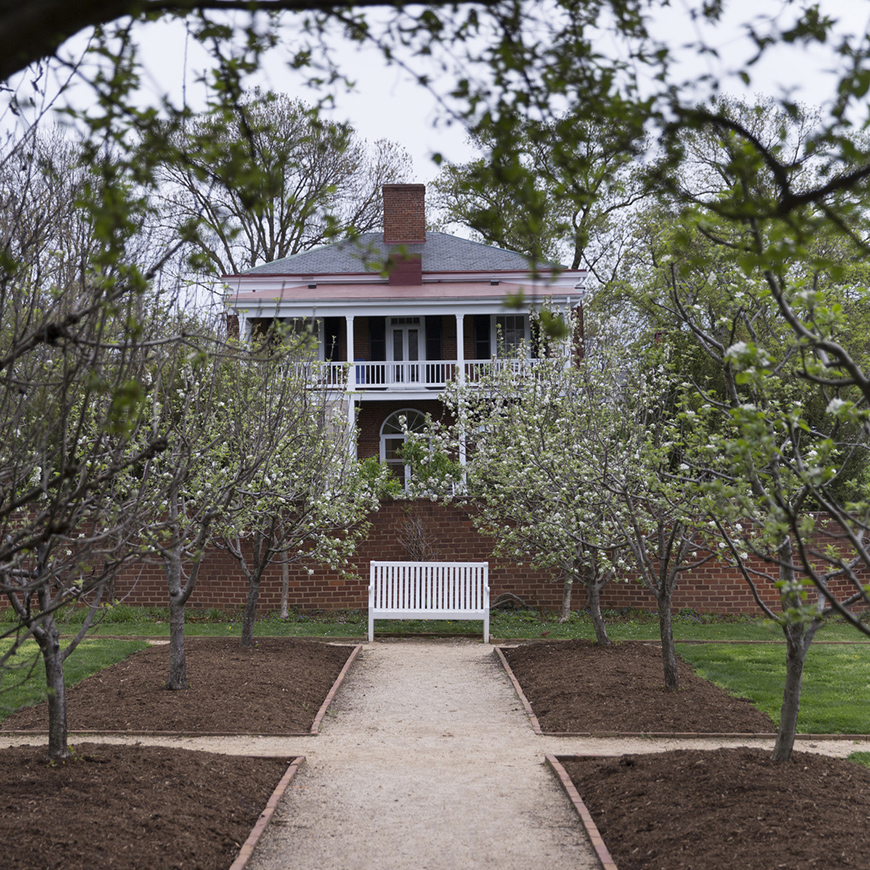
These are the ideals to which Thomas Jefferson aspired when conceiving the University of Virginia. In his quest to reinvent higher education in America, Jefferson sought to cultivate an environment in which students and faculty could live and learn from one another.
At the University of Virginia, scholars and professors could exercise their ingenuity, develop the tools of self-governance and push the boundaries of knowledge in service to the common good.
The result was a revolution: the Academical Village. Designed to foster cross-disciplinary exchange, Jefferson’s design housed faculty from a range of specialties around a central Lawn. Students lived in single rooms between professors’ homes. At the head of their shared Lawn stood the library (also known as the Rotunda). And at the Lawn’s foot lay a panoramic view of the mountains, suggestive of the intellectual frontiers that lay open to discovery.
Indeed, Jefferson’s Academical Village gave physical shape to his ideals--ideals that would alter the course of higher education in America and the world.
#1
Most Beautiful Campus in America, Best College Reviews
31
Years as a UNESCO World Heritage Site
53
Years as a National Historic Landmark
Richard Guy-Wilson:
Jefferson’s original capitals were carved by the Raggi boys in Carrara in Italy. Jefferson saw them as part of the education of the University. You learn from the architecture. And so here they are, on the most prominent building at the university, it was the mind of the University. The capitals were very badly damaged in the fire. This marble that was replaced in the early twentieth century deteriorated very, very badly.
Jody Lahendro:
As we began planning for the current multi-year renovation at the Rotunda, a UNESCO World Heritage Site, we knew we wanted to look at replacing the capitals.
Despite all out efforts to preserve them, there was no way to keep them from still falling apart. The University then began a long process to select the marble to be used and the contractors to carve and install the replacement capitals.
Guy-Wilson:
And the decision was made let’s get the very best that is possible anywhere and duplicate the original Jeffersons.
William Wylie:
I was walking by the Fralin Museum one day and there’s a crew out scanning one of the old capitals to the rotunda. When I started to talk to them turned out they were from Carrara. So I showed them my book and we talked about all these people we knew. And I was able to go over to Carrara, film and photograph the initial modeling they were making. They had taken those 3D scans and produced a quarter fragment of one of the capitals.
Lahendro:
Not only did we have the scans, we also sent over 3 large remnants. And then the Pedrini carvers did a clay mock-up of the top part that we didn’t know as well.
Wylie:
So it was super fascinating to see these guys working with both fragments of stone, photographs from the 1800’s, and trying to make a fragment that then the UVA architects and the people working on the project would come over and approve for them to then go to a full-scale capital. And then that started them on their process of, loading the blocks of marble which had come down from the quarry, putting them into the robotic carvers.
Lahendro:
Pedrini used the CNC machines to cut out the bulk material and take it to within 10-15 percent of the final product. Then carvers come in and, by hand, carve that last 10 to 15 percent. of the capital.
Guy-Wilson:
when I saw them un-crated it was very, very moving because they are so beautifully done.
Wylie:
Finally, it was amazing to see the capitals picked off the trucks here at UVA, moved slowly into place, to finally being placed on top of the columns perfectly positioned. It was just fantastic to see this process from the beginning to the end.
UVA is regarded as one of the most beautiful and prestigious universities in the world. In 1987, UNESCO named the University (in conjunction with Monticello) a World Heritage Site. This rare distinction has been bestowed upon only the world’s most culturally significant landmarks. As a proud recipient of this honor, UVA sits alongside such renowned global sites as the Acropolis, the Galapagos Islands and the Pyramids of Giza. The University is one of only two such sites still being used for its original purpose.

Jefferson’s designs are credited with establishing neo-classical architecture in the United States.

Today, these highly coveted quarters are reserved for our most accomplished fourth-year students.

Designed and built in their current forms in the 1940s, the University’s gardens now serve as a haven for study, conversation and reflection.

The Academical Village continues to bring Jefferson’s vision to life every day. The Rotunda—originally the University’s library—still serves as the heart of the University and as a symbol of our endless pursuit of knowledge. The eastern and western sides of the Lawn retain the unique pavilions sketched by Jefferson, flanking student living quarters. Designed to promote purposeful collaboration, these buildings continue to play a major role in the University’s community, housing our most honored faculty and student leaders. Just steps from the Lawn and Rotunda, the Memorial to Enslaved Laborers honors the lives and work of those who built and maintained the University in its early years.